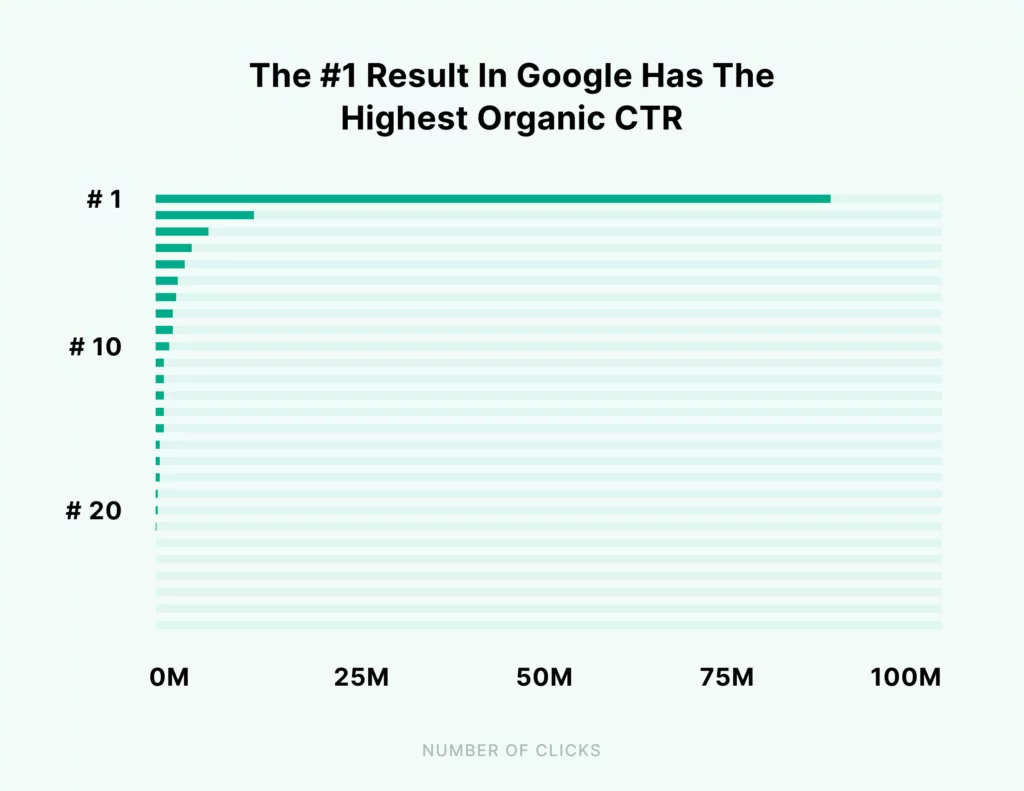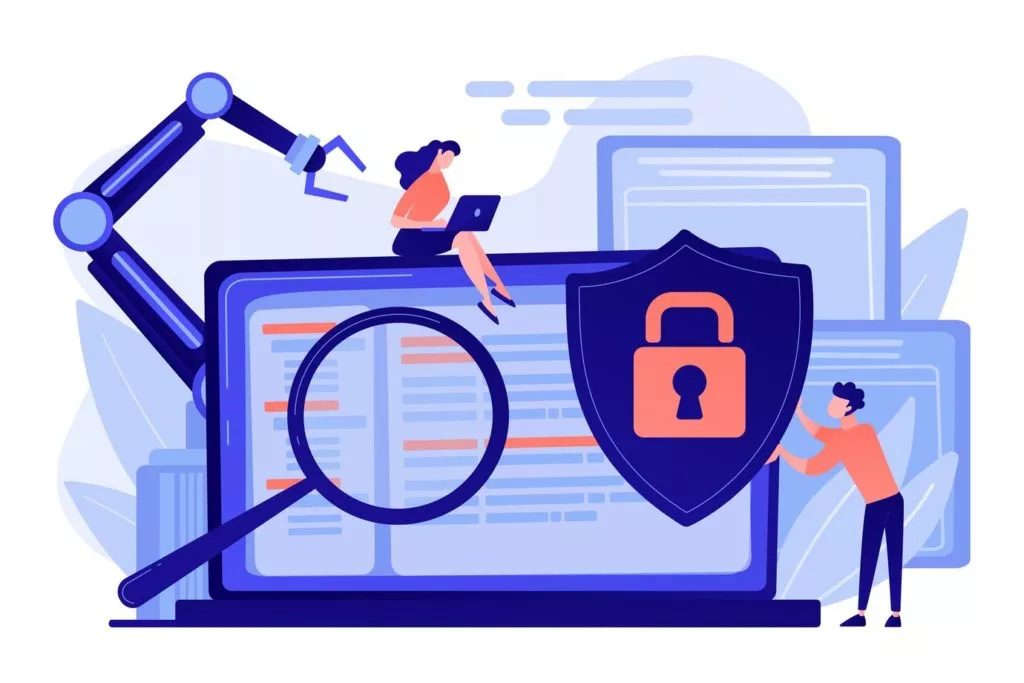Do you suspect that your website is being targeted by a negative SEO attack?
Negative SEO involves utilizing deceptive search engine optimization (SEO) tactics to undermine a competitor’s website ranking and credibility, leading to decreased performance and conversions. Identifying negative SEO can be challenging, but it’s crucial to safeguard your site’s integrity and maintain your legitimate SEO efforts.

What is Negative SEO?
Negative SEO encompasses malicious strategies aimed at sabotaging a competitor’s website rankings in search engine results pages (SERPs). This unethical practice often involves manipulating search algorithms to diminish a competitor’s visibility and traffic.
How to Spot Negative SEO
Detecting negative SEO tactics requires vigilance and proactive monitoring. Here are some indicators to watch for:
- The influx of Low-Quality Backlinks: Check your backlink profile regularly for sudden increases in links from irrelevant or spammy websites.
- Duplicate Content: Look for instances where your website’s content appears on other domains without authorization, which indicates potential content scraping or theft.
- Negative Online Reviews: Monitor your online reputation for malicious reviews or comments that could harm your brand’s credibility.
- Decline in Website Traffic: Analyze traffic patterns to identify unusual drops, which may signal a negative SEO attack affecting your site’s visibility.
- Website Security Breaches: Be alert to signs of hacking or malware injection, such as unauthorized content alterations or spammy additions to your site.
Strategies to Avoid Negative SEO:
A. Focus on Positive SEO
In response to negative SEO tactics, positive SEO strategies are paramount for safeguarding your website’s performance and reputation. Positive SEO involves legitimate techniques to improve your site’s visibility, authority, and relevance in search engine results. Here are some general strategies to enhance your positive SEO efforts:
- Quality Content Creation: Produce high-quality, relevant content that resonates with your target audience. Content that is informative, engaging, and valuable is likely to attract organic traffic and earn the backlinks naturally.
- Keyword Optimization: Conduct thorough keyword-research to identify relevant keywords or phrases related to your niche. Incorporate the keywords naturally into your content, meta tags, headings, and URLs to improve your site’s visibility for relevant search queries.
- Optimized Site Structure: Ensure that your website has a clear and logical structure, making it easy for users and search engines to navigate. Use descriptive URLs, organize content into categories and subcategories, and utilize internal linking to enhance crawlability and indexing.
- Mobile Optimization: With increasing users accessing the internet via mobiles, optimizing your website for mobile responsiveness is crucial. Ensure your site is mobile-friendly, with fast loading times and easy device navigation.
- Link Building: Focus on building high-quality backlinks from authoritative and relevant websites within your industry. Natural, organic link-building through guest blogging, influencer outreach, and content promotion can improve your site’s authority and credibility.
- Social Media Engagement: Engage with the audience on social media to increase brand visibility and drive traffic to your website. Share content across social channels, encourage social sharing, and participate in conversations to build a strong online presence.
- User Experience (UX) Optimization: Prioritize user experience by creating a seamless browsing experience for your visitors. Improve site speed, optimize navigation, and ensure your site is accessible and easy to operate across different devices and browsers.
- Technical SEO: Address technical aspects of SEO, such as site speed, schema markup, XML sitemaps, and canonical tags, to ensure optimal performance and indexing by search engines.
- Regular Monitoring and Analysis: Continuously monitor your site’s performance using web analytics tools and SEO metrics. Identify areas for improvement, track keyword rankings, and stay informed about changes in search engine algorithms.
B. Establishing a Positive Online Image

Cultivating a positive online reputation is an effective approach to counter negative SEO. Online reputation management (ORM) entails overseeing how your brand is perceived across various digital platforms, including search engines. This involves monitoring mentions of your brand, products, and services to ensure a favorable perception.
ORM serves as a powerful tool in the fight against negative SEO. While it may not remove negative content entirely, ORM strategies can help mitigate its impact. Here’s how ORM can aid in combating negative SEO:
- Identifying Negative Content: ORM tools can monitor online mentions of your brand and flag negative reviews, articles, or social media posts that may be part of a negative SEO campaign.
- Responding to Negative Content: ORM enables you to craft professional responses to negative content, demonstrating transparency and potentially mitigating its impact.
- Promoting Positive Content: ORM involves creating and promoting positive content about the brand, such as blog posts, press releases, or customer testimonials. This helps push down harmful content in search results.
- Building Brand Trust: By actively engaging with your audience and addressing concerns, ORM helps foster trust and credibility, making it less likely for negative SEO tactics to tarnish your reputation.
C. Utilize Google’s Suite of Tools

To empower legitimate users to maximize their online presence, Google offers a range of tools to combat negative SEO. Among the most valuable tools within Google Search Console (GSC) are:
Email Alerts: You may opt in to receive email alerts from GSC to stay informed about any unusual activity detected on your website.
Disavow Tool: This tool enables you to disassociate your site from toxic backlinks, helping mitigate the impact of negative SEO tactics.
Leveraging these tools facilitates the identification and mitigation of negative SEO attacks.
D. Enhance Your Site Security

Site vulnerabilities provide malicious agents with opportunities to exploit and manipulate your website. Therefore, bolstering site security is paramount in combating negative SEO.
Implementing SSL/HTTPS on your site is highly recommended. Upon installing an SSL certificate, a padlock icon appears in the address bar, signaling to site visitors that they are on a secure page. Additionally, the website address begins with HTTPS, instilling trust and encouraging repeat visits.
Further security measures for WordPress sites include:
- Keep Software Updated: Regularly update your CMS, plugins, themes, and other software to address security vulnerabilities and prevent exploitation by hackers.
- Enforce Strong Passwords: Encourage using complex passwords and consider implementing two-factor authentication (2FA) for added security.
- Regularly Back Up Your Website: Maintain recent backups to facilitate quick restoration in case of a security breach or unforeseen incident.
- Utilize Reputable Security Plugins: Deploy reputable WordPress security plugins to block intruders and install a web application firewall (WAF) for added protection against common attacks.
- Limit User Access: Grant access to website functionalities only to users who require it, minimizing potential damage from unauthorized access.
Prioritizing site security is essential in safeguarding against negative SEO attacks. Allocating resources to maintain a secure website should be considered a fundamental best practice for optimizing site performance and resilience.
E. Maintain Vigilance Over Your Backlink Profile

Among the most prevalent tactics employed in negative SEO campaigns are the introduction of spammy links and redirects. Combatting these threats necessitates diligent monitoring of your backlink profile. An invaluable tool for this task is Semrush’s Backlink Audit tool, which streamlines the process and enhances efficiency. Backlink Audit tools, such as Semrush’s, facilitate the identification of toxic backlinks, sparing you the laborious task of manual review. Upon identification, each backlink can be categorized into one of three lists within Semrush:
- Whitelist: Safe backlinks deemed harmless to your site’s integrity.
- Removal List: Backlinks requiring removal, with corresponding outreach to the referring site.
- Disavow List: Backlinks flagged for disavowal, signaling to Google to disregard their influence. While Google advises disregarding toxic backlinks, their presence can still trigger penalties, underscoring the importance of disputing them.
Simultaneously, prioritize the cultivation of a robust natural backlink profile. Emphasize the acquisition of high-quality backlinks from authoritative and relevant sources through strategic content marketing and outreach endeavors. This proactive approach fortifies your site’s resilience against negative SEO attacks.
F. Monitor for Duplicate Content

Efficiently identifying duplicate content is achievable through tools like Grammarly, Copyscape, and analogous content marketing aids. By copying and pasting sections of your content into these platforms, you can conduct thorough plagiarism checks.
For a more streamlined approach to duplicate content detection, leverage advanced SEO tools such as Semrush’s Site Audit tool or Ahref’s Site Audit tool. These tools conduct comprehensive site crawls, flagging issues detrimental to your site’s performance, including duplicate content.
G. Collaborate with Your Hosting Provider
In attacks involving heavy crawling, promptly enlist your hosting company’s support. Their expertise can aid in pinpointing the source of unusual traffic influxes. Additionally, they can implement practical solutions such as rerouting traffic through DDoS protection services or reinforcing firewall configurations. Trust Nestify to be your loyal partner in this.
H. Monitor Your Online Reputation
Establish Google Alerts for your brand name to receive notifications of any mentions across various digital platforms, including social media and review sites. Swiftly address any negative content encountered, employing a professional and proactive approach.
Furthermore, proactively manage your Google reviews to maintain a favorable online reputation. Ensuring a higher ratio of positive to negative reviews bolsters your credibility and contributes to improved SEO performance and enhanced sales potential.
When reviews are unfounded or part of a negative SEO campaign, utilize Google’s reporting mechanisms to request their removal. Familiarize yourself with the takedown process to swiftly address any detrimental content.
Conclusion:
The threat of negative SEO looms large over businesses’ online presence and reputation. However, by proactively implementing measures such as monitoring backlink profiles, detecting duplicate content, collaborating with hosting providers, and managing online reputation effectively, you are equipped to mitigate the impact of negative SEO attacks and ensure the integrity and performance of your website.
FAQs on Negative SEO:
Are there any tools or services available to help detect and combat negative SEO?
Several tools and services offer features specifically designed to monitor backlinks, track changes in website content, and identify potential negative SEO attacks. Examples include SEMrush, Ahrefs, Moz, and Google Search Console.
Can negative SEO attacks affect my website’s reputation beyond search engine rankings?
Negative SEO attacks can damage your website’s reputation beyond search engine rankings by causing distrust among users, tarnishing your brand image, and potentially leading to legal issues if the attacks involve copyright infringement or other unlawful activities.
How long does it take to recover from a negative SEO attack?
The time it takes to recover from a negative SEO attack varies depending on the level of damage and the effectiveness of the mitigation strategies implemented. Recovery efforts may involve:
- Removing harmful backlinks.
- Requesting link removals from webmasters.
- Disavowing toxic links.
- Improving overall website security and content quality.
It’s essential to act swiftly and diligently to minimize the impact and expedite the recovery process.



